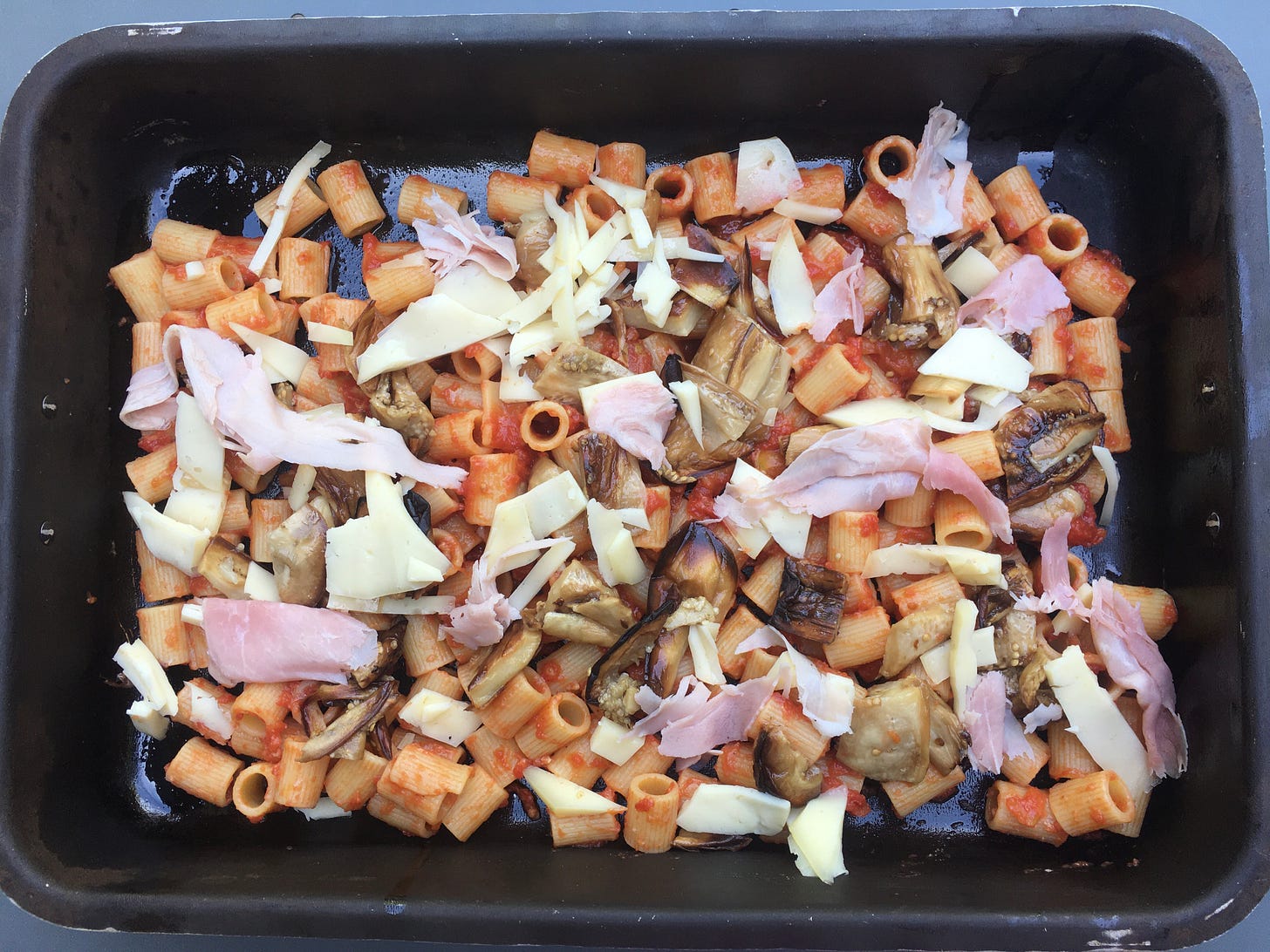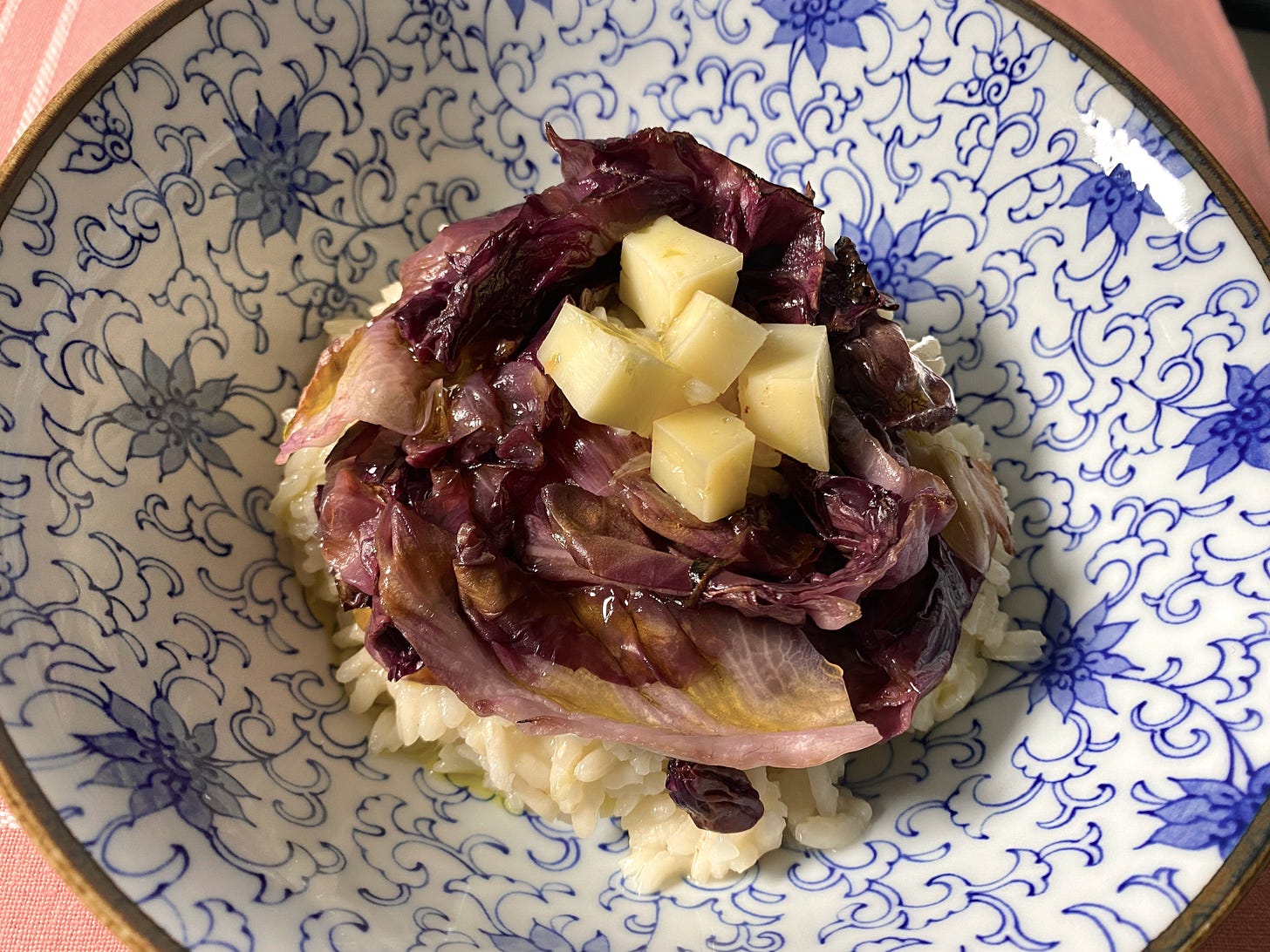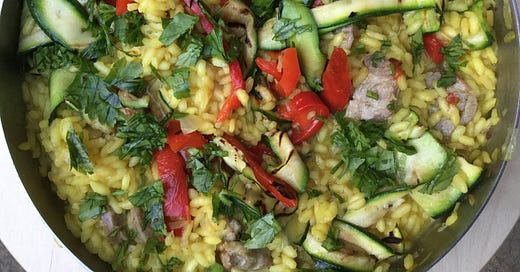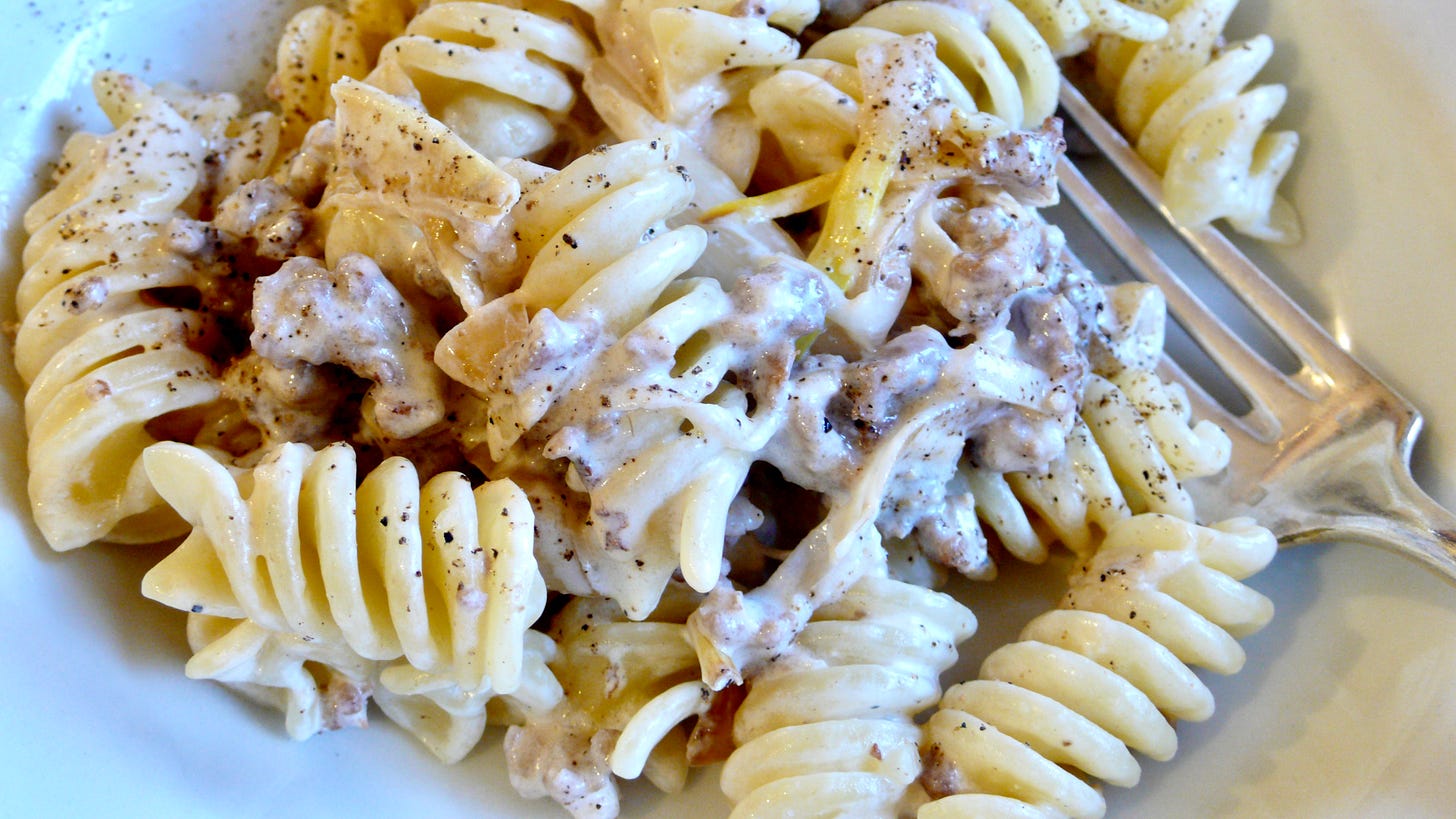History matters
Food always makes for such wonderful stories, don’t you think?
It is so part of ourselves in a way that goes well beyond physiology. It connects us to memories of family, of love as well as of disappointment.
It’s linked to the experience of places and times.
It gives us a sense of history as it so rapidly evolves and becomes so surprising, enticing, and yes, sometimes repellent.
I can hardly think of food without pondering where it comes from, how it has traveled to our table, and who makes it and why.
I have never stopped to wonder about the infinite learning that can be found in food.
And, by the way, did I already tell you that I love your company? thank you for being here ♡!
The 1970s dinner table
I was in my late teens when risotto arrived on our dinner table in Umbria, around the end seventies. My mum - a superb cook - was Sicilian, and my father was from Umbria. On weekdays, our meals were simple and traditional: pasta with ragù, slices of beef cooked with olive oil and sage, frittata, huge bowls of lettuce salad with too much white vinegar for my taste, sausages, pecorino cheese, fantastic charcuterie, a piece of fruit as a dessert.

On the weekends, my mum’s talent shined with the most divine lasagna, baked pasta, eggplant parmigiana, roast meat with melt-in-the-mouth potatoes, magnificent baccalà, all sorts of vegetables, stuffed, braised, or baked. We had no idea how lucky we were and that not all families had heavenly food like ours.

The rice of my youth
My mother used only three recipes for rice. She was a master of arancini, which she made with tomato sauce, filled with peas and cheese, sometimes meat, then breaded and deep fried.
Once a year - on March 19 - she made the frittelle di San Giuseppe to celebrate Father’s Day. For the frittelle (fritters) she cooked rice in milk, sugar, and cinnamon, shaped them as small pancakes then shallow fried them in olive oil.
The third and probably most useful way, was to bring us a bowl of rice with tomato sauce and a sprinkle of Parmigiano when we were ill. That was the only time we were allowed to eat in bed and it felt like pure luxury.
The onset of creamy foods
In the late 1960s in most of the country South of Bologna, creamy savory foods were unusual. My mother did not use butter, cream, béchamel, or creamy cheeses like Gorgonzola. This was perfectly normal in Italy then. People did not travel much and ate foods that were available locally or that belonged to their heritage.
None of us, nor anyone in our extended family had more than a vague idea of how a risotto looked and tasted.

Within a little more than a decade, throughout the peninsula, Italians started to consume creamy foods with abandon, paying no heed to their arteries or the widening hips.
Risotto, tortellini with cream sauce, tiramisù and pannacotta went mainstream. Pasta alla norcina, a delicious concoction of pork sausage and cream became an icon of Umbrian cuisine. The norcina still is - in my humble opinion - one of the best contemporary pasta recipes of Italy, especially when served with a sprinkle of black truffle from the Umbrian woodlands.
How to make a bad risotto
It’s hard to define the parameters of a truly exceptional risotto. I did not grow up in regions like Veneto or Lombardy, where risotto is a pillar of the culinary tradition and it has local styles and ingredients. As a consequence, I have my personal preferences developed over a lifetime of tasting risotto in restaurants and testing endless recipes at home.
The risotto we discovered in the 1970s, from cookbooks or the TV, was made by cooking the rice slowly in broth with the meat or vegetables generally added at the beginning. I cringe at the memory of asparagus cooked for 25 minutes or tasteless squash. How can you ever get any flavor from a squash that is boiled with rice?
I also cringe at certain versions of risotto I have eaten while traveling, often overloaded with butter and cheese, making it stodgy, sticky, and indigestible.
Another pet peeve is the seafood risotto dished out by many trattorie in Rome’s city and nearby coast. I can’t prove how they make it, but I think they boil the rice in stock, and then toss it with a tomato sauce and assorted crustaceans. You can tell it’s not a proper risotto because it’s either too dry or has a pool of broth which tastes like boullion. I have learned to stay away from that.
Contemporary risotto
In the last few years, risotto has become the territory of fancy chefs. This is mainly due - I think - because risotto lends itself easily to ornate presentation and extravagant ingredients. Italians however, are more interested in a good dinner that is not too difficult or expensive.
For me, a perfect, everyday risotto results from:
the excellent ingredients, meaning the best risotto rice you can buy, a flavorful - and possibly homemade - broth, and the best quality vegetables, meat, or seafood.
the respect and care of the cooking times of every element of the recipe. Think about it, if there is sausage, wouldn’t you prefer it grilled or braised rather than boiled? Vegetables and seafood work especially well if cooked separately and added when the rice is almost ready to be served.
a simple combination of ingredients and condiments that contribute to the balance of flavors which I have explained in last February’s post.
a creamy but slightly fluid texture which must primarily result from the slow cooking and then enhanced by modest quantities of fats like cheese, butter, or extra-virgin olive oil.

What to cook this month
Spring seems to be coming for real, at least here in Rome.
If the sun is shining for you too, it’s time for lighter foods, like the radicchio risotto above or another vegetarian risotto which I have been testing during the last couple of months.
Keep reading with a 7-day free trial
Subscribe to MADONNA DEL PIATTO to keep reading this post and get 7 days of free access to the full post archives.








